Personal development is a crucial aspect of the employee experience. It allows employees to develop a range of skills that help improve their ability to perform their roles.
At the same time, these personal development skills go beyond their job description and can help them progress in their careers and improve on a personal level.
This guide will explore personal development, discussing:
- The various types of skills which fall under the description of personal development
- Why personal development is important, both for the individual and the company at large
- How to put together a personal development plan
- How to manage your personal development, including helpful tools
- Personal development methods for improving your skills
Let’s dive into the topic in more detail.
What is Personal Development?
Personal development is a continuous process focused on enhancing skills, knowledge, and attributes to maximize potential and improve life quality. It includes activities like goal setting, self-awareness, learning new skills, and building confidence. This growth journey is unique to each person and may be driven by personal goals, professional ambitions, or the pursuit of a more balanced life. Engaging in personal development helps individuals adapt to a changing world, overcome challenges, and succeed personally and professionally. The process often involves both formal and informal learning experiences, tailored to individual interests and needs.
What are Personal Development Skills?
Personal development skills allow employees to enhance their performance capabilities across a wide range of metrics. This includes learning how to use new tools and processes, as well as developing soft skills such as leadership and communication.
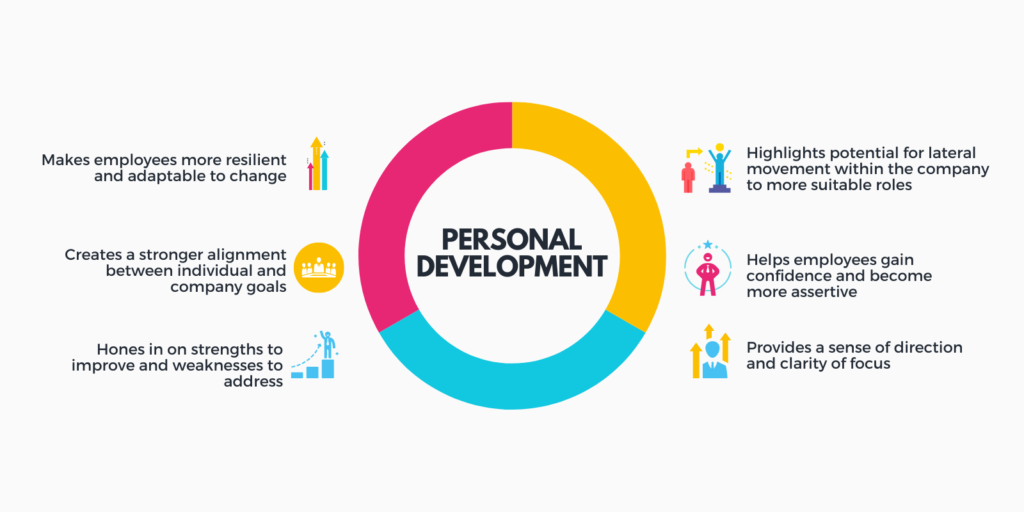
Personal development skills help make employees more effective in their roles. They can also help them to achieve a higher overall quality of life, improving their confidence and equipping them to progress in their careers.
Some of the skills which can help with this professional and personal growth include:
- Improving time management skills
- Clarifying career ambitions and creating an action plan to achieve them
- Becoming a more effective communicator
- Acting in a more assertive manner
- Improving work/life balance
- Working on core weaknesses
- Building on core competencies
- Becoming a better leader
Employees can work towards accomplishing these skills with the help of their employers. Companies are in a position to provide training, mentorship, coaching, and other resources to achieve these goals.
Since everyone has their own unique ambitions and skillsets, working closely with their employer is essential. Collaboration with managers, HR leaders and others can help them to break down where development is needed the most. It also ensures personal development goals are aligned with their role and responsibilities.
Additional Read: Personal Work Objectives to Help You Succeed in Your Career
5 Reasons Why Personal Development is Important
An organization is only as good as its staff. With an effective personal development plan, an organization can ensure its employees are always up for new challenges and ready for any curveball.
Life and career are intertwined, and having a growth mindset can ensure success in both areas. With a PDP in place, you will successfully propel yourself toward success by constantly being able to step out of your comfort zone and managing hurdles that might otherwise seem insurmountable.
To further understand the importance of personal development, let’s explore the following benefits:
- With a wider range of skills, employees are more adaptable to changes.
- Helps develop new skills, expand knowledge, and go for lateral growth.
- Improves confidence, helps achieve goals, and explores potential.
- Motivates employees by aiding career plans.
- Instils emotional intelligence and helps build a better relationship with co-workers.
Realizing the importance of a personal development plan is essential for both the company and the employee. A company can create a healthier workspace by laying stress on personal development.
Personal Development, Mental Health and Well-being
There are multiple studies that closely link personal growth with better mental health and well-being. For example, two combined studies from the University of Gdansk discovered that:
“Readiness for self-improvement (i.e. readiness to improve oneself) accounted for overall life satisfaction within important human life domains and satisfaction with the present and future life … Work engagement was significantly linked to readiness to improve oneself but was not with readiness to take care of one’s health.”
With mental health and well-being a top priority for business leaders, focusing on personal development is increasingly relevant. Employees with a positive growth mindset are better equipped to deal with the challenges posed by world-shaking black swan events.

What is a Personal Development Plan?
The December 2020 article from Gallup, PIPs Are Pink Slips – Development Is How Employees Improve, lays out the raw statistics on development and company success.
“Having the chance to learn and grow is fundamental to engagement — and your finances. Gallup’s recent meta-analysis shows that the most highly engaged teams have 81% less absenteeism, 64% fewer safety incidents (and 58% fewer patient safety incidents, in healthcare settings), 41% fewer quality defects, 18% higher sales productivity, 23% greater profitability and 66% better wellbeing.”
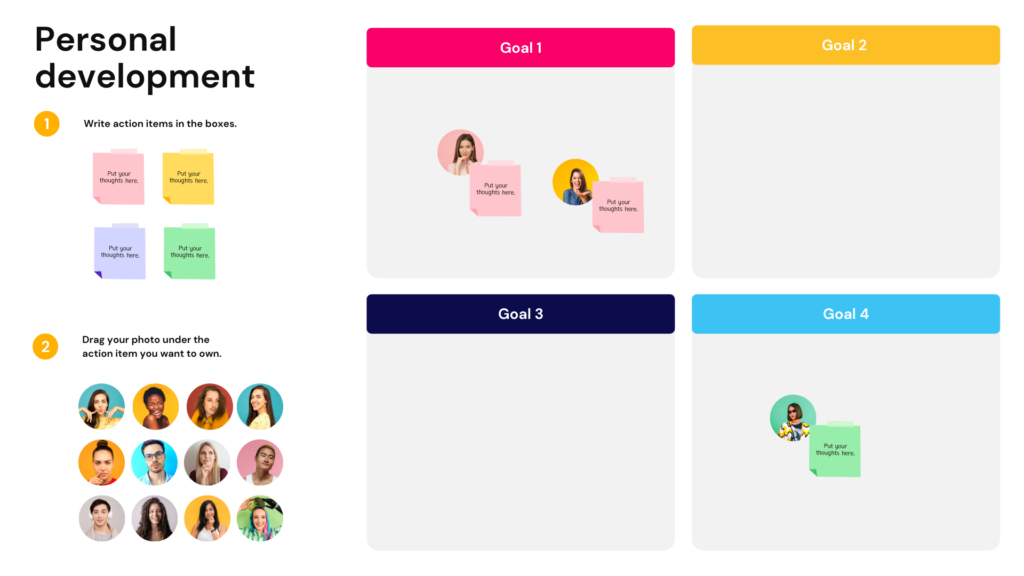
A personal development plan provides the necessary structure to establish, track progress, and update those goals which drive these metrics of success.
The key steps to follow when setting up a personal development plan are:
1. Set Your Personal Development Goals.
Understanding which goals you want to achieve is the first step to putting together a personal development plan. This can be done in a variety of ways, including assessing the current role and responsibilities to determine how best development can complement these factors, as well as the use of SMART goals.
You can also perform a SWOT analysis, which outlines Strengths, Weaknesses, Opportunities and Threats. This will help individuals to better understand what areas need improving, which strengths they can capitalise on, and how to marshal the appropriate resources to drive success.
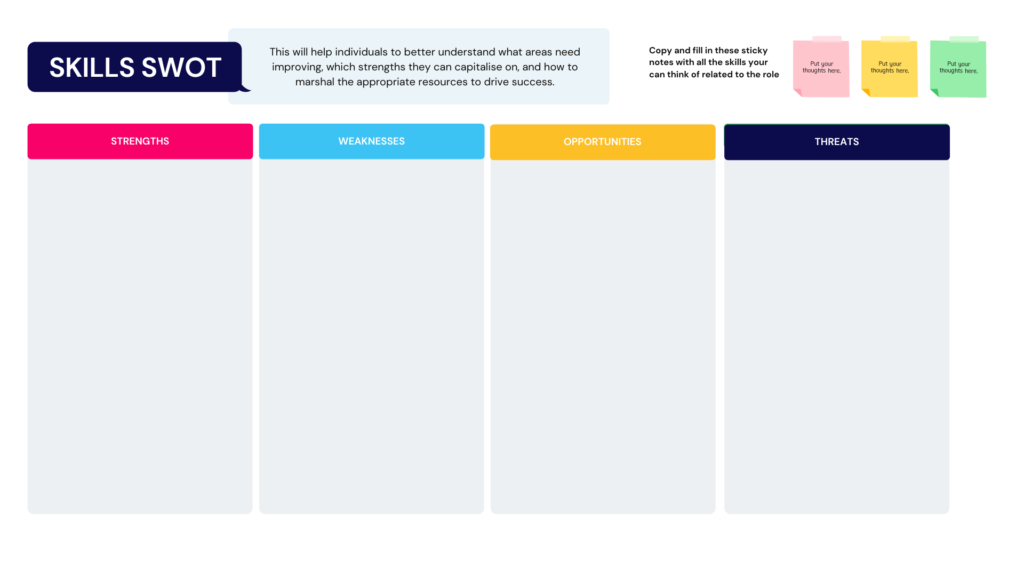
2. Choose the Priorities of These Goals and Set Up an Action Plan
Next, it’s time to set an order of priority for any goals decided on. It may be that some goals require the completion of others or the acquisition of relevant skills before they can be completed.
Short term goals should, of course, come first, and these can be used to lay the groundwork for larger, more ambitious goals. For instance, if gaining a degree in a particular field is a long-term goal, related short-term goals could include researching the courses and resources available for this degree.
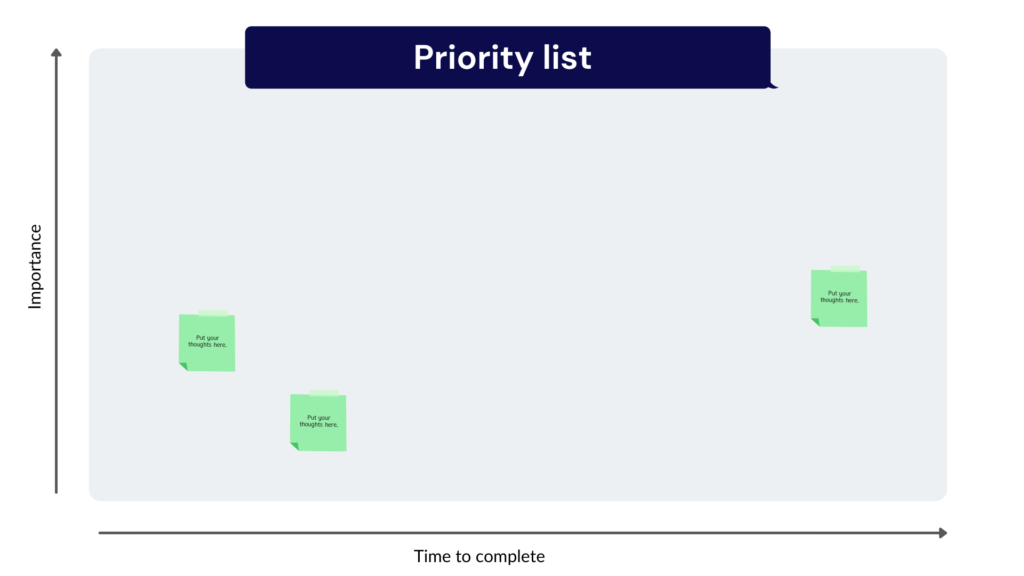
3. Establish Deadlines and Milestones for Achieving Goals
Once all goals and their components have been decided, it’s time to establish a schedule and deadlines. These deadlines should be added to performance management software so they can be effectively monitored. These tools allow employees to track their development objectives in real-time.
4. Determine Obstacles and Opportunities
Obstacles to success can be external and internal. Recognising personal shortcomings such as difficulty motivating oneself is as important as understanding work commitments which might disrupt a schedule.
At the same time, it’s important to identify opportunities that might help accomplish personal development plans. Colleagues with relevant skills might be able to offer coaching. The employer may have training resources that can help fast track an individual to completing these goals. Determining the obstacles and opportunities will help the employee navigate their way to success.
5. Decide How to Measure Progress and Keep the Personal Development Plan on Track
Whenever possible, personal development plans should be constructed of clear metrics to measure success. Break them down into appropriate key performance indicators (KPIs) and objectives and key results (OKRs). These can then be tracked over time.
Additional Read: What is a PDR?
Managing Your Personal Development
Personal development is an ongoing process. As such, it requires ongoing management with a range of tools to help keep the employee on the right track. A comprehensive performance management suite will offer the necessary tools to manage your personal development.
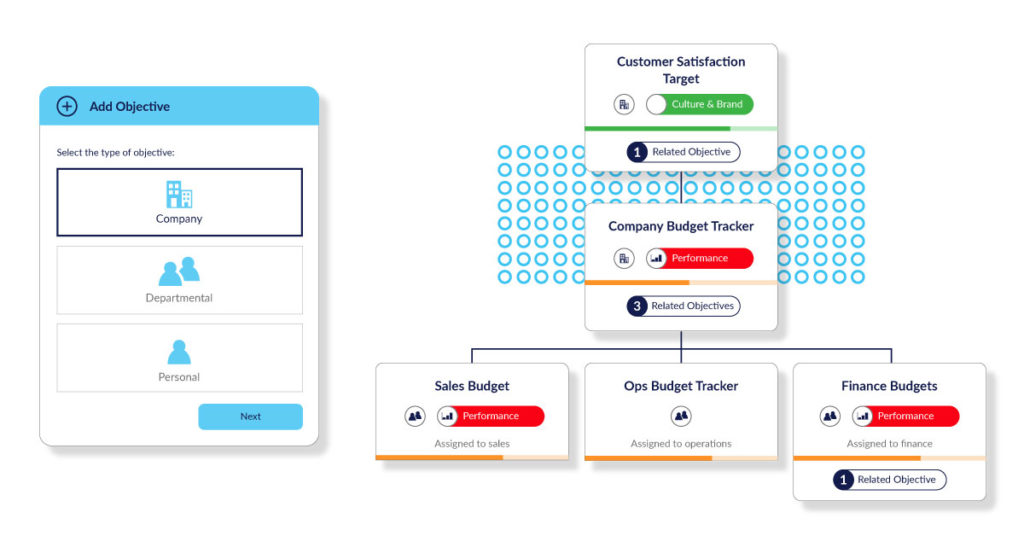
These tools include:
- OKR and KPI tracking. As previously mentioned, using KPIs and OKRs is an effective way to clarify performance development goals. These can be monitored on a daily basis so progress towards completion is clearly understood.
- Creating virtual teams. Employees can gain insights, resources and feedback from their peers when involved in a virtual team. These can be particularly useful for employees who work remotely.
- Continuous one2one check-ins. Managers and team leaders should consistently communicate with employees about their performance development. Regularly scheduled one2one check-ins make sure such plans are achievable and relevant.
- Skills databases. Building a skills database is a great way for HR leaders to map where different skills exist. From these lists, employees with particular talent in a given field can be identified and used to help upskill other employees through mentoring programs.
How to Improve Your Personal Development Skills
Achieving the goals set out in a personal development plan isn’t the only way to experience personal growth. Personal development can also be improved with the development of broader corresponding skills.
This includes encouraging employees to read more widely on a range of topics. By expanding their knowledge, employees can view their own development through a fresh perspective. Encouraging them to make notes can also help systematise how they think about development.
Think in Terms of Systems Rather Than Goals
While personal development goals are clearly established, development can also be gained by thinking in terms of systems rather than goals. Single-mindedly focusing on goals can often lead to missed opportunities and an inability to see the wood for the trees.
Developing skills is often a process with no clear end. Encouraging continual improvement is a great way to make sure personal development becomes embedded in the employee’s mindset.
5 Areas of Personal Development
An organization must be a well-oiled machine. A personal development plan, therefore, focuses on pushing its staff to be balanced, well-rounded individuals.
The following are the 5 key areas that steer personal development at work and elsewhere:
1. Mental Growth
- Helps you learn, process, and respond to information.
- Ensures you can look at the bigger picture.
- Allows you to set priorities.
2. Social Engagement
- Maintaining open communication with peers,
- Creating a well-balanced social life, and
- Having a proper response to negative interactions.
3. Emotional Development
- Having empathy and EI
- Effectively handling stress
- Fulfilling your emotional needs
4. Spiritual Development Involves Finding Your Centre and Having a Sense of Zen
- Keeps you focused
- Helps maintain work-life balance
5. Physical Growth
- Taking care of your physical well-being
Taking up personal development at both work and home creates a work-life balance. It helps manage stress, build on your skills, and grow your career.
Self-aware people can motivate themselves, achieve their goals, and be resilient to adversities. Learn how to take criticism and feedback, and use it to give your career a direction with effective personal development.
In effect, it helps you be the best version of yourself.
Frequently Asked Questions
What is Meant by Personal Development?
Personal development is the ongoing process of nurturing existing skills while developing new ones. Encompassing practical skills with soft skills, this development can be achieved through a variety of methods, from courses and training to the mindful practice of positive habits and behaviours.
How Do You Do Personal Development?
Personal development is accomplished by identifying the skills which need developing and establishing a plan of action to accomplish them. These can be linked to existing innate skills or new skills, with a clear outline of how they can be achieved.
What Are Some Examples of Measurable Personal Development Goals?
Some examples of common personal development goals include:
- Learning a new skill
- Improving networking
- Becoming a better public speaker
- Learning a programming language
- Taking online classes
- Becoming better at time management
- Focusing on listening more intently
- More effectively managing stress





